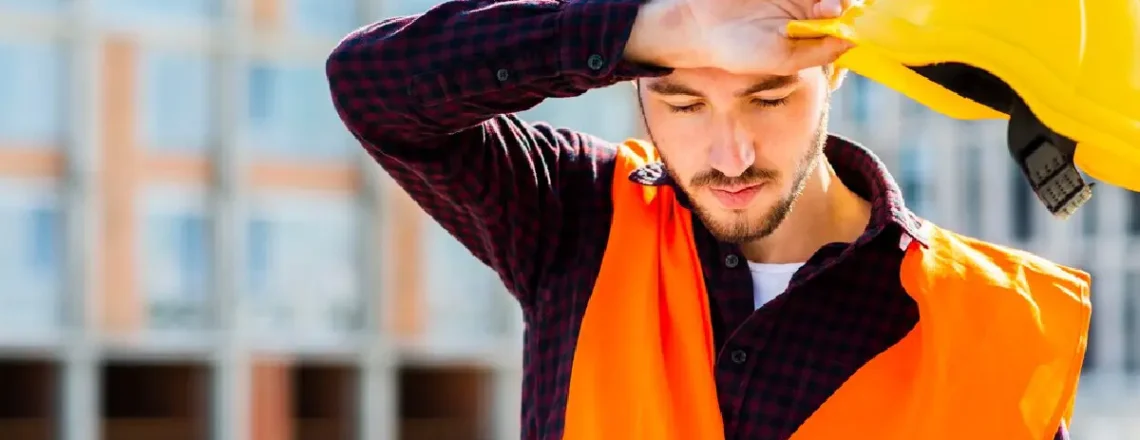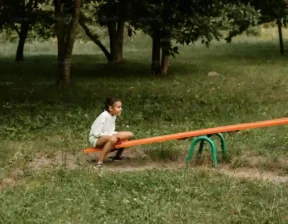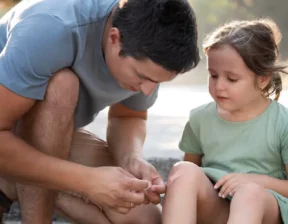
Extra 10% Off Orders above ₹2499 : Use Code: HUP10
Safest Comfort Helmet for Kids
Free Shipping | 7-Day Free Returns
Lifetime Warranty*
COD Available

by Basit Manzoor
Motorcycle helmets play a crucial role in protecting riders’ heads during accidents. But what if you’ve had a light crash? Can you dust yourself off and carry on with the same helmet? Can you continue using your helmet, or should you replace it? It’s a question that many riders ponder. The simple answer is no. You might think it was just a minor crash, a mere bump in the road. But here’s the truth: Even after a minor crash you should replace a helmet as it is unsafe to reuse it.
Let me give you an example to help you understand better. Imagine you’ve been gardening, tending to your plants. During your care, you accidentally nicked one of your gloves with a thorny rose stem. Although the damage may be minimal, you know that the gloves are no longer as reliable in shielding your hands from potential prickles. Similarly, your helmet may have suffered unseen impacts that weaken its ability to absorb shock and protect your head.
Read More: Top Bicycling Skills for Kids to Learn
Firstly, it’s essential to understand what a light crash means. A light crash is when you fall off your motorcycle at a relatively low speed or impact. It’s important to note that even a light crash can exert significant force on your helmet, causing structural damage to your helmet. Therefore, replace a helmet even after a minor crash. While the external appearance may not reveal visible damage, the internal structure could have suffered compromised integrity. During a crash, a helmet absorbs and disperses the force of the impact, potentially causing unnoticed structural damage that compromises its ability to protect your head.
After any crash, it’s crucial to thoroughly inspect your helmet before determining if it’s still usable. Start by visually examining the exterior for cracks, dents, or deformations. Pay close attention to areas where the impact may have occurred. Additionally, check the chin strap and fastening mechanism for any signs of damage. While visible damage is an obvious indication for replacement, it’s equally important to assess the internal components.
Here is how a crash can impact the inner part of your helmet, affecting its structural integrity and protective effectiveness:
When a crash occurs, the foam liner of your helmet springs into action, compressing and deforming to absorb the force of the fall. It’s like a trusty sidekick taking a hit for you. However, this foam can sustain permanent damage even in a seemingly light crash. It may compress unevenly or develop weak spots, compromising its future protecting abilities and leaving your head vulnerable.
As you peel back the layers within the helmet, it becomes akin to a well-used backpack. Beneath the outer shell lies the inner padding, much like the cushioning within a backpack that protects your belongings. Observe this inner layer closely, searching for any indications of compromise. Depending on the severity of the crash, the foam liner may experience disintegration or deterioration. High-energy impacts can cause the foam to break down or lose its structural integrity, rendering it less capable of providing the necessary cushioning and protection. This internal damage may not be apparent upon visual inspection, highlighting the importance of thorough examination, especially after a crash. Just as a worn-out backpack loses its ability to cushion the weight of your load, even minor alterations in the helmet’s padding can hint at potential damage that compromises its protective capabilities.
Read More: Protecting Your Head: Vital Components of a Helmet (Explained!)
Imagine a spiderweb across a windowpane. In a crash, the outer shell of your helmet may remain intact, but hidden beneath its surface, the inner part can develop microscopic cracks and fractures. Although these cracks may not be immediately visible on the outer shell, they extend into the foam liner. Have you ever seen a spiderweb across a windowpane? That is exactly how these fractures would look under an X-ray machine. These fractures weaken the foam liner, diminishing its power to shield your head from harm. That’s why a thorough inspection of the inner part is crucial, regardless of the helmet’s external appearance.
The retention system, including the chin strap and fastening mechanism, is another critical component of the helmet’s inner part. During a crash, the impact can strain or damage the retention system, compromising its ability to securely keep the helmet on your head. If the retention system is compromised, it can affect the helmet’s stability on your head, leaving you exposed to potential dangers during your next ride.
When it comes to dropping your helmet, the difference between a small accidental slip and a more significant drop can have varying consequences. Let’s say you accidentally drop your helmet from a coffee table or the waist down; the impact is likely to be minimal, and the chances of significant damage are low. The same cannot be said for dropping it from a substantial height, like the top of a tall ladder. The impact on the helmet by the fall could lead to structural damage or visible signs of distress.
The severity of damage can also depend on the nature of the impact. If your helmet hits an object with a sharp edge, such as a fence, it can cause much more harm than a flat surface. Sharp edges concentrate the impact on a smaller area, potentially causing damage to the helmet’s outer shell, which can be easily detected upon visual inspection.
So, my fellow riders, when faced with the decision to replace or reuse your helmet after a light crash, remember the hidden dangers that lie beneath the surface. Conduct a thorough inspection, assess the damage, and prioritize your safety above all else. Because when it comes to protecting your head, there’s no room for compromise. It is better to replace a helmet after a crash than to risk your life by wearing it. Get back on that bike confidently, knowing that you’ve made the right choice and that your helmet has your back or, rather, your head!
If you’re looking for a safe, secure, and attractive Helmet for your kids, then Headzup is the right place for you. We have the best kids’ helmets for cycling and skating.
 31 July 2025
31 July 2025
Due to the continuous rise in technology, getting kids off screens can be a difficult...
 29 July 2025
29 July 2025
Young riders love the thrill of being on wheels and ride to explore nature. Whether...
 27 July 2025
27 July 2025
Nowadays, mobile phones and social media dominate childhood, and playing outdoors has been neglected. Introducing...
 25 July 2025
25 July 2025
You are running late for work; your scooter is ready, but your kid refuses to...
FIND WHAT MOVES YOU
FIND WHAT MOVES YOU
FIND WHAT MOVES YOU
FIND WHAT MOVES YOU
FIND WHAT MOVES YOU
FIND WHAT MOVES YOU